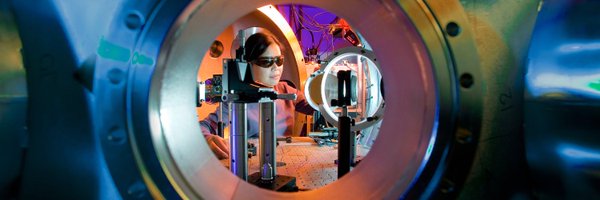 (AGENPARL) - Roma, 26 Agosto 2022
(AGENPARL) - Roma, 26 Agosto 2022(AGENPARL) – ven 26 agosto 2022 A weekly compendium of media reports on science and technology achievements at Lawrence Livermore National Laboratory. Though the Laboratory reviews items for overall accuracy, the reporting organizations are responsible for the content in the links below.
LLNL Report, Aug. 26, 2022
New plasma optics could make it possible to boost the peak power of systems like the L3 HAPLS at ELI Beamlines Research Center in the Czech Republic. Photo courtesy of ELI Beamlines.
[Gratings scale up](https://www.azooptics.com/News.aspx?newsID=27808)
Researchers at Lawrence Livermore have created a portable multi-petawatt laser that circumvents the power constraints of traditional solid-state optical gratings by using plasma transmission gratings. The concept might make it possible to build an ultrafast laser up to 1,000 times more potent than comparable existing lasers.
Diffraction gratings are essential for chirped-pulse amplification (CPA), a process used in petawatt (quadrillion-watt) lasers to extend, amplify and compress a high-energy laser pulse without harming optical components. The Advanced Radiographic Capability of the National Ignition Facility and the Nova Laser, the first petawatt laser in the world, both depend on CPA, which received the 2018 Nobel Prize in physics.
Plasma gratings “allow us to deliver a lot more power for the same size grating” because they have a damage threshold that is several orders of magnitude higher than conventional reflection gratings, according to Matthew Edwards, a former LLNL postdoc and co-author of the study.
[Read More](https://www.azooptics.com/News.aspx?newsID=27808)
Korean Institute of Science and Technology President Seok?Jin Yoon and LLNL Deputy Director of Science and Technology Pat Falcone sign a memorandum of understanding to collaborate on basic science and technology in the renewable energy, climate science, data science and characterizations arenas. Photo by Randy Wong/LLNL.
[A renewable collaboration](https://insidehpc.com/2022/08/llnl-and-korea-institute-of-science-and-technology-to-collaborate/)
Leaders at Lawrence Livermore National Laboratory (LLNL) and the Korea Institute of Science and Technology (KIST) have signed a memorandum of understanding (MOU) to collaborate on basic science and technology in the renewable energy, climate science, data science and characterizations arenas.
Under the MOU, KIST will have office space in the Livermore Valley Open Campus where staff, postdocs and students can spend time on-site collaborating with LLNL researchers. The MOU shows the value of strategic international and university engagements. LLNL has five Laboratory Directed Research and Development projects that are intended to be collaborative with KIST in these areas of mutual interest: solid-state batteries, hydrogen, catalysis, climate and data science.
[Read More](https://insidehpc.com/2022/08/llnl-and-korea-institute-of-science-and-technology-to-collaborate/)
Carolyn Zerkle has been named as deputy director of LLNL and vice president of Lawrence Livermore National Security, LLC. Her appointment is effective Sept.. 12, 2022.
[Meet the new deputy](https://losalamosreporter.com/2022/08/22/carolyn-zerkle-named-deputy-director-of-lawrence-livermore-national-lab/)
Carolyn Zerkle has been selected as Lawrence Livermore National Laboratory’s deputy director and vice president of Lawrence Livermore National Security, LLC, Lab Director Kim Budil announced this week.
As deputy director, Zerkle will participate in the day-to-day management of the Laboratory, including interfacing with the Livermore Field Office (LFO), acting as director in Budil’s absence and serving as a key member of the Laboratory’s senior management staff, providing executive-level guidance and direction. She will oversee key institutional priorities, including safe and successful operations and vital infrastructure to support the delivery of all program commitments and deliverables; recruitment and retention of a quality workforce in the operations areas of the Laboratory; and efficient business and operational approaches.
Zerkle also will have responsibility for fostering successful relationships among the Laboratory, the LLNS Board of Governors and partners, the Department of Energy/National Nuclear Security Administration, the Livermore Field Office, other national laboratories, industry and the local community.
[Read More](https://losalamosreporter.com/2022/08/22/carolyn-zerkle-named-deputy-director-of-lawrence-livermore-national-lab/)
Researchers at LLNL, Oak Ridge National Laboratory and several universities used a common laser-based metal 3D printing method to produce a new class of high entropy alloys that demonstrated both high yield strength and high ductility beyond other state-of-the-art 3D printed metal alloys. Image courtesy of UMass Amherst.
[3D-printed metal becomes super strong](https://vervetimes.com/components-could-have-aerospace-medical-energy-and-automotive- applications-sciencedaily/)
Metal 3D printing is used to produce components for many commercial applications, particularly in the transportation sector, where printing methods such as laser powder bed fusion (L-PBF) can produce super-strong and ultralight complex-shaped components that cannot be manufactured with conventional techniques.

